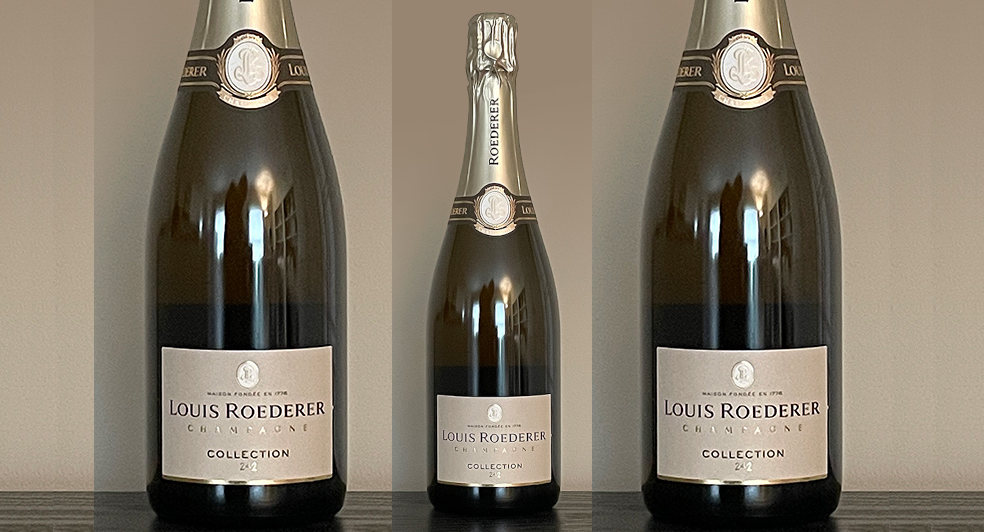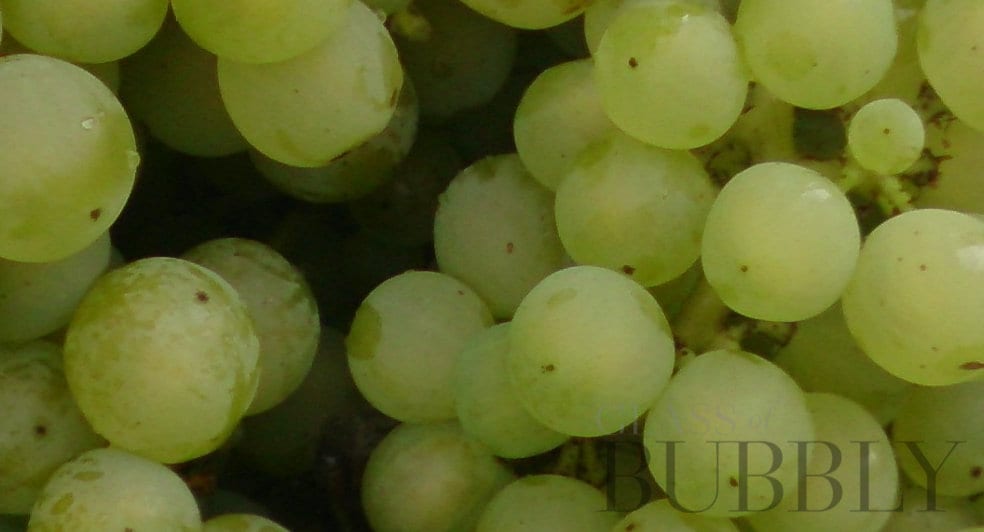Louis Roederer Collection 242 Champagne
21st September 2023

Louis Roederer [Road-ur-ur], a distinguished Champagne producer situated in Reims, France, traces its origins back to 1776, when it began as Dubois Père & Fils.
While its early days were marked by still wine production, the focus soon evolved to embrace the art of crafting fine Champagnes. The business underwent a transformation under the stewardship of Louis Roederer in 1833 when he not only inherited but also renamed the company for himself. He boldly ventured into international markets, focusing particularly on Russia. This endeavor gained him immense recognition, including from Tsar Nicolas II, who appointed Louis Roederer as the official wine provider to the Imperial Court of Russia.
Created in 1876, the wine made for Nicolas’ grandfather, Alexander II, was the first Cuvée de Prestige (Prestige Cuvée) of Champagne and is called Cristal, referring to the unusual clear glass of the bottle. The Tsar had pointed out to his sommelier that the design of a standard Champagne bottle made the beautiful color and effervescence of Champagne invisible to the eye. He therefore instructed Roederer that his personal cuvée be served in bottles made of transparent crystal glass with a flat bottom (allegedly to foil the insertion of explosives in the indentation by would-be assassins) to remedy this defect. Thus was Cristal born, and the first notion of a premium cuvée. For more than a century, the appearance of the patented Cristal bottle has remained unchanged. After the fall of the Russian monarchy in 1917, Roederer decided to continue producing Cristal and to market it internationally, and it remains one of the world’s most sought-after Champagnes in the world.
Despite encountering financial challenges due to events like the Russian Revolution and U.S. Prohibition, Roederer emerged as a premier Grandes Marques producer. In the 1930s, Camille Olry-Roederer took charge after marrying Léon Olry-Roederer. The 1970s saw Jean-Claude Rouzaud, a descendant of the Olry-Roederer family, take the helm. Focusing on modernization and expansion, he shaped Roederer Champagne’s contemporary identity.
Today, it stands as one of the few Champagne houses that remain independently operated and family-owned. The estate vineyards encompass 590 acres [240 hectares] that produce approximately two-thirds of the grapes required for their Champagne production. (The remainder is sourced from long-standing farmer partners.) Vineyards are strategically dispersed across Champagne’s prominent zones of Montagne de Reims, Vallée de la Marne, and Côte des Blancs.
Like most producers around the world, Roederer Champagne has embraced sustainability. 185 estate acres [75 hectares] adhere to biodynamic principles, making Roederer a pioneer in sustainable viticulture. 285 acres [115 hectares] are farmed organically. Since the 2021 harvest, these plots have borne the official “AB” [agriculture biologique] organic certification, symbolizing their embrace of organic viticulture.

Each year, approximately 600 individuals engage in hand-picking grapes from Roederer’s vineyards, with the harvest usually spanning ten to fifteen days. the grapes are transported in 110lb [50 kg] baskets from the vineyards to Roederer’s dedicated press-houses. The resulting musts embark on their transformation within the Reims’ cellars, ensuring that the unique qualities of each plot endure through to the blending process. A winter ritual involves Cellar Master Jean-Baptiste Lécaillon and staff oenologists assessing each wine before the final blending and spring bottling.
With a global presence, Louis Roederer annually exports over 3.5 million bottles of their exceptional Champagne to more than 100 countries.
Louis Roederer Collection 242 Champagne
Collection 242 is … wait for it … Roederer’s 242nd blend. Much more complex than just the usual mix of Chardonnay and Pinot Noir, it is a multi-vintage Champagne made from a selection of plots located in La Vallée de la Marne: the vineyards of “La Rivière,” La Côte des Blancs, and La Montagne de Reims. Each contributed one third of the blend, with priority given to sustainable winegrowing practices. The ‘collection’ of varietals, barrels, and vintages were 42% Chardonnay, 36% Pinot Noir, and 22% Meunier. 34 % came from the ‘perpetual reserve’ stocks of 2012, 2013, 2014, 2015, and 2016. 10% are ‘reserve wines aged in oak’ from 2009, 2011, 2013, 2014, 2015, and 2016. The remaining 56% is from the 2017 vintage. 34% of the juice underwent malolactic fermentation. After bottling, the wine was aged for a minimum of four years. (Collections 243 and 244 have since been made as well.)
On opening the bottle, I could smell the bready/yeasty notes from a foot away, which I love. The somewhat coarse fizz quickly dissipated, but all was forgiven once I tasted it. The wine opens with an excellent mouthfeel, with a luxurious texture that coats the palate, the signature of an outstanding Chardonnay. Ripe, sweet fruit complemented by subtle oaky notes is supported by bracing acidity and a hint of lemon. The ABV is 12%.
Note: Roederer also has a Napa Valley operation, where they make my favorite California sparkler, Roederer Estate Brut. An excellent value, it is fresh and crisp with elegant bubbles, and features pear and subtle spice flavors. Equal to or better than its French cousin, which is twice the price.
![]()
Stephen Hawk
Award-winning artist, writer, photographer, epicure and wine guru. He started his wine blog, winervana.com and although he enjoys all types of wines and spirits from around the world, his blog favors wines from the New World.
